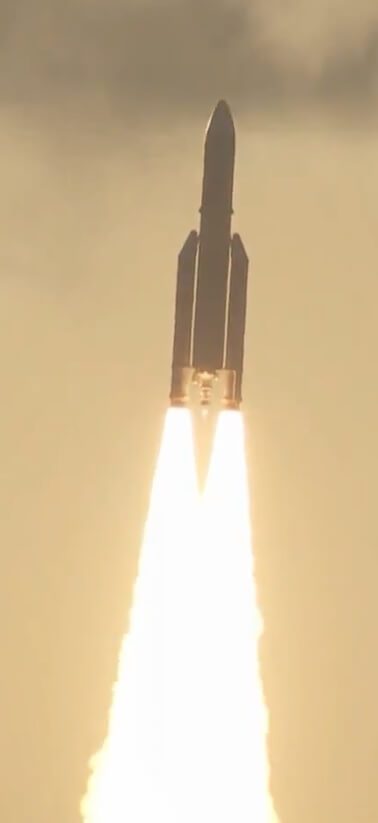While European plans are to replace it with its cheaper-to-operate Ariane 6 equivalent, the expendable Ariane 5 remains the benchmark for launch reliability. The Ariane 5 rocket family has posted 80 consecutive successful launches since its last failure in December 2002. The latest Arianespace-operated Ariane 5 launch (flight VA238) used the now-standard ECA variant. It occurred, as usual, from a jungle surrounded launch pad in Kourou in French Guiana. Lift off took place at 2115 GMT on 28 June 2017.
Aboard the launch vehicle was the Thales Alenia Space-built 5,780kg Hellas-Sat 3/Inmarsat S EAN (aka Europasat) communications satellite will provide both direct broadcasting and broadband services for Hellas-Sat in Ku- and Ka-band and mobile communications for Inmarsat’s S-band European Aviation Network. Also aboard was the Indian Space Research Organisation’s built and operated 3,477kg GSat-17 communications spacecraft which will provide communications services over the Indian subcontinent and over the Middle East.
Both satellites were injected into a Geosynchronous Transfer Orbit, at the apogee of which, both would use their on board propulsion to circularise themselves into their operational geostationary orbital positions.









